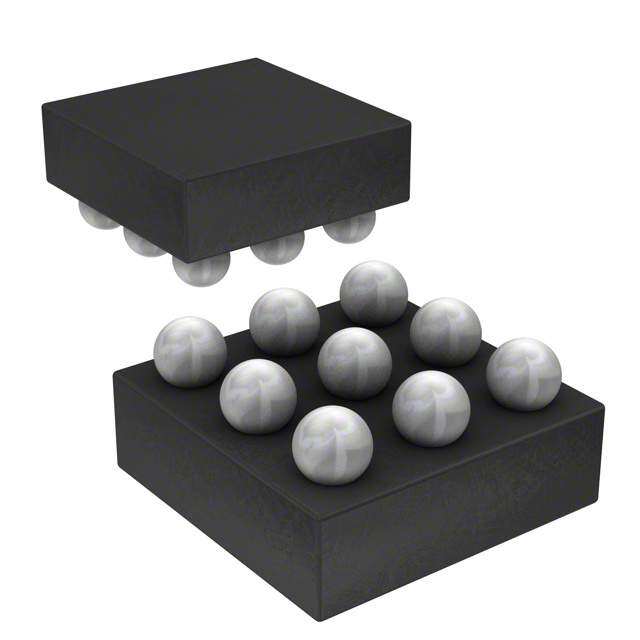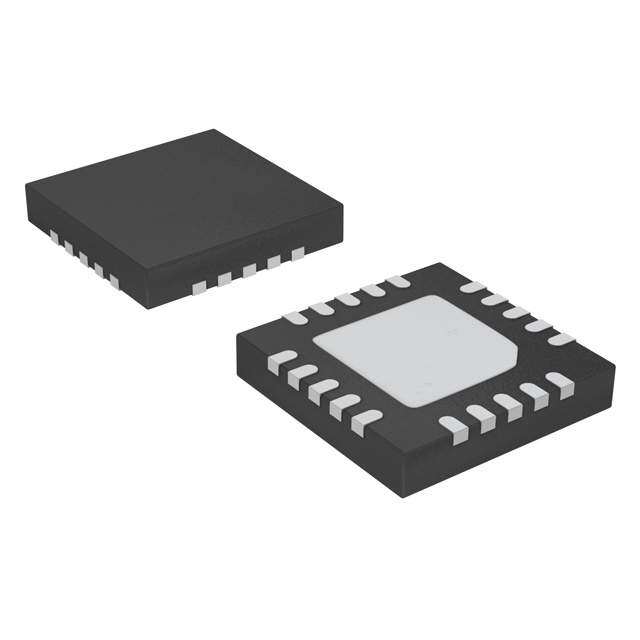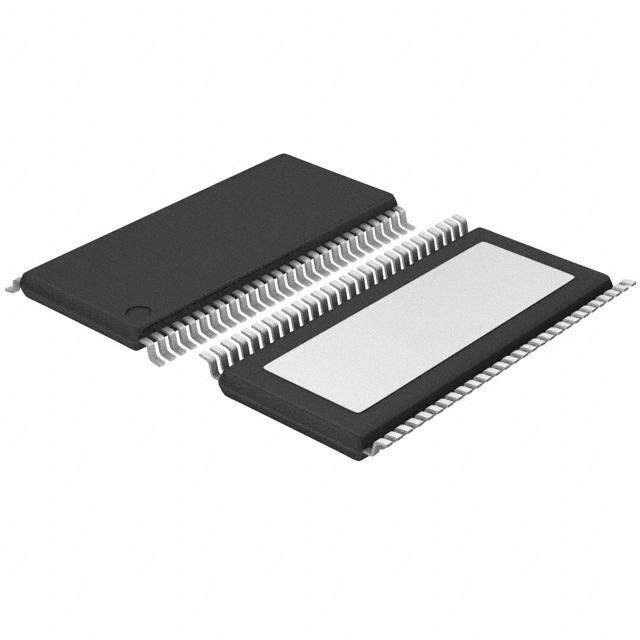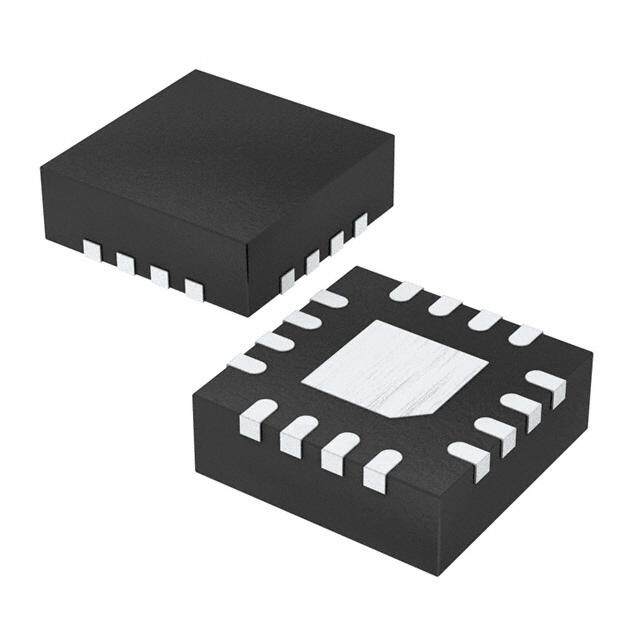ICGOO在线商城 > 集成电路(IC) > 线性 - 音頻放大器 > LM4864MX/NOPB
- 型号: LM4864MX/NOPB
- 制造商: Texas Instruments
- 库位|库存: xxxx|xxxx
- 要求:
| 数量阶梯 | 香港交货 | 国内含税 |
| +xxxx | $xxxx | ¥xxxx |
查看当月历史价格
查看今年历史价格
LM4864MX/NOPB产品简介:
ICGOO电子元器件商城为您提供LM4864MX/NOPB由Texas Instruments设计生产,在icgoo商城现货销售,并且可以通过原厂、代理商等渠道进行代购。 LM4864MX/NOPB价格参考。Texas InstrumentsLM4864MX/NOPB封装/规格:线性 - 音頻放大器, Amplifier IC 1-Channel (Mono) Class AB 8-SOIC。您可以下载LM4864MX/NOPB参考资料、Datasheet数据手册功能说明书,资料中有LM4864MX/NOPB 详细功能的应用电路图电压和使用方法及教程。
| 参数 | 数值 |
| 产品目录 | 集成电路 (IC)半导体 |
| 描述 | IC AMP AUDIO PWR .725W AB 8SOIC音频放大器 300 mW Audio Power Amplifier with Shutdown Mode 8-SOIC -40 to 85 |
| 产品分类 | |
| 品牌 | Texas Instruments |
| 产品手册 | http://www.ti.com/lit/gpn/lm4864 |
| 产品图片 |
|
| rohs | 符合RoHS无铅 / 符合限制有害物质指令(RoHS)规范要求 |
| 产品系列 | 音频 IC,音频放大器,Texas Instruments LM4864MX/NOPBBoomer® |
| 数据手册 | |
| 产品型号 | LM4864MX/NOPB |
| PCN设计/规格 | |
| THD+噪声 | 0.7 % |
| 不同负载时的最大输出功率x通道数 | 725mW x 1 @ 8 欧姆 |
| 产品 | Audio Amplifiers |
| 产品种类 | 音频放大器 |
| 供应商器件封装 | 8-SOIC |
| 其它名称 | 296-35420-6 |
| 包装 | Digi-Reel® |
| 商标 | Texas Instruments |
| 安装类型 | 表面贴装 |
| 安装风格 | SMD/SMT |
| 封装 | Reel |
| 封装/外壳 | 8-SOIC(0.154",3.90mm 宽) |
| 封装/箱体 | SOIC-8 Narrow |
| 工作温度 | -40°C ~ 85°C (TA) |
| 工作电源电压 | 3 V, 5 V |
| 工厂包装数量 | 2500 |
| 最大工作温度 | + 85 C |
| 最小工作温度 | - 40 C |
| 标准包装 | 1 |
| 特性 | 关闭,热保护 |
| 电压-电源 | 2.7 V ~ 5.5 V |
| 电源电压-最大 | 5.5 V |
| 电源电压-最小 | 2.7 V |
| 电源电流 | 3.6 mA |
| 电源类型 | Single |
| 类 | Class-AB |
| 类型 | AB 类 |
| 系列 | LM4864 |
| 输入信号类型 | Single |
| 输出信号类型 | Differential |
| 输出功率 | 675 mW |
| 输出类型 | 1-通道(单声道) |
| 通道数量 | 1 Channel |
| 音频负载电阻 | 8 Ohms |
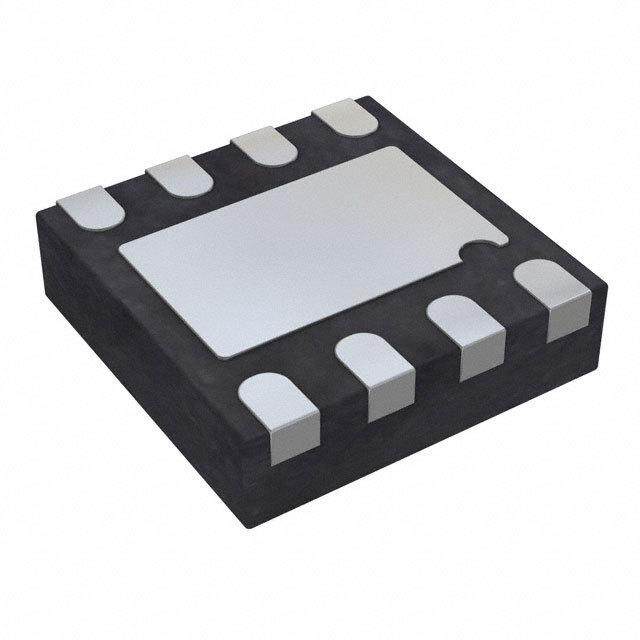

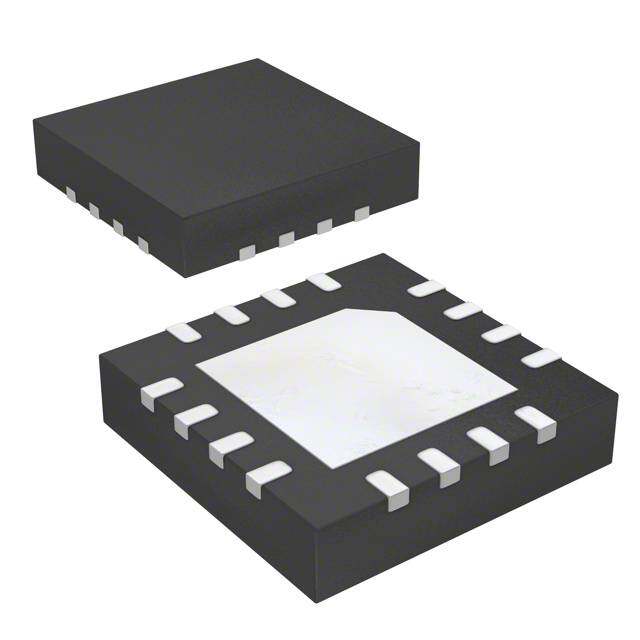
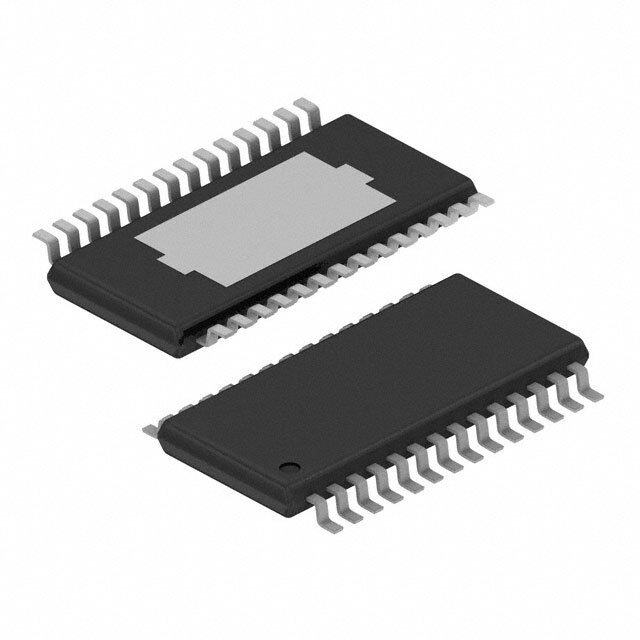
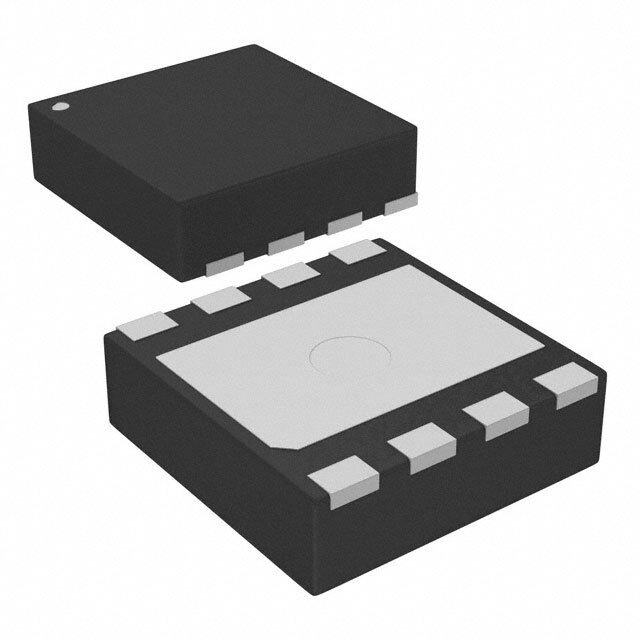

PDF Datasheet 数据手册内容提取
LM4864 www.ti.com SNAS109F–SEPTEMBER1999–REVISEDMAY2013 LM4864 725mW Audio Power Amplifier with Shutdown Mode CheckforSamples:LM4864 FEATURES DESCRIPTION 1 • VSSOP,SOIC,PDIP(1),andWSONPackaging The LM4864 is a bridged audio power amplifier 23 capable of delivering 725mW of continuous average • NoOutputCouplingCapacitors,Bootstrap power into an 8Ω load with 1% THD+N from a 5V Capacitors,orSnubberCircuitsareNecessary powersupply. • ThermalShutdownProtectionCircuitry Boomer® audio power amplifiers were designed • Unity-GainStable specifically to provide high quality output power from • ExternalGainConfigurationCapability a low supply voltage while requiring a minimal amount of external components. Since the LM4864 APPLICATIONS doesnotrequireoutputcouplingcapacitors,bootstrap capacitors or snubber networks, it is optimally suited • Cellularphones forlow-powerportableapplications. • Personalcomputers The LM4864 features an externally controlled, low • Generalpurposeaudio power consumption shutdown mode, and thermal shutdownprotection. KEY SPECIFICATIONS The closed loop response of the unity-gain stable • POat1%THD+NwithVDD=5V,1kHz LM4864 can be configured by external gain-setting – LM4864LD,4Ωload625mW(typ) resistors. The device is available in multiple package typestosuitvariousapplications. – LM4864LD,8Ωload725mW(typ) – LM4864M&LM4864N(1),8Ω load675mW (typ) – LM4864MM,8Ω load (2)300mW(typ) – LM4864,16Ω load550mW(typ) – Shutdowncurrent0.7 µA(typ) (1) Notrecommendedfornewdesigns.ContactTIAudio Marketing. (2) TheDGK0008BApackageisthermallylimitedto595mWof powerdissipationatroomtemperature.ReferringtoFigure21 inTypicalPerformanceCharacteristics,thepowerdissipation limitationforthepackageoccursat300mWofoutputpower. Thispackagelimitationisbasedon25°Cambient temperatureandθ =210°C.Forhigheroutputpower JA possibilitiesrefertoPOWERDISSIPATION. 1 Pleasebeawarethatanimportantnoticeconcerningavailability,standardwarranty,anduseincriticalapplicationsof TexasInstrumentssemiconductorproductsanddisclaimerstheretoappearsattheendofthisdatasheet. BoomerisaregisteredtrademarkofTexasInstruments. 2 Allothertrademarksarethepropertyoftheirrespectiveowners. 3 PRODUCTIONDATAinformationiscurrentasofpublicationdate. Copyright©1999–2013,TexasInstrumentsIncorporated Products conform to specifications per the terms of the Texas Instruments standard warranty. Production processing does not necessarilyincludetestingofallparameters.
LM4864 SNAS109F–SEPTEMBER1999–REVISEDMAY2013 www.ti.com Typical Application Figure1. TypicalAudioAmplifierApplicationCircuit Connection Diagram Figure2. VSSOP,SOIC,andPDIPPackage-TopView SeePackageNumberDGK0008A,D0008AorP0008E(3) Figure3. WSONPackage-TopView SeePackageNumberNGY0010A (3) Notrecommendedfornewdesigns.ContactTIAudioMarketing. 2 SubmitDocumentationFeedback Copyright©1999–2013,TexasInstrumentsIncorporated ProductFolderLinks:LM4864
LM4864 www.ti.com SNAS109F–SEPTEMBER1999–REVISEDMAY2013 Figure4. DIELAYOUT(B-STEP) Thesedeviceshavelimitedbuilt-inESDprotection.Theleadsshouldbeshortedtogetherorthedeviceplacedinconductivefoam duringstorageorhandlingtopreventelectrostaticdamagetotheMOSgates. Absolute Maximum Ratings (1)(2) SupplyVoltage 6.0V StorageTemperature −65°Cto+150°C InputVoltage −0.3VtoV +0.3V DD PowerDissipation (3) Internallylimited ESDSusceptibility (4) 2000V ESDSusceptibility (5) 200V JunctionTemperature 150°C Soldering VaporPhase(60sec.) 215°C SmallOutlinePackage Information Infrared(15sec.) 220°C θ (VSSOP) 56°C/W JC θ (VSSOP) 210°C/W JA θ (SOIC) 35°C/W JC ThermalResistance θJA(SOIC) 170°C/W θ (PDIP)* 37°C/W JC θ (PDIP)* 107°C/W JA θ (WSON) (6) 63°C/W JA θ (WSON) (6) 12°C/W JC (1) AbsoluteMaximumRatingsindicatelimitsbeyondwhichdamagetothedevicemayoccur.OperatingRatingsindicateconditionsfor whichthedeviceisfunctional,butdonotensurespecificperformancelimits.ElectricalCharacteristicsstateDCandACelectrical specificationsunderparticulartestconditionswhichensurespecificperformancelimits.Thisassumesthatthedeviceiswithinthe OperatingRatings.Specificationsarenotspecifiedforparameterswherenolimitisgiven,however,thetypicalvalueisagoodindication ofdeviceperformance. (2) IfMilitary/Aerospacespecifieddevicesarerequired,pleasecontacttheTexasInstrumentsSalesOffice/Distributorsforavailabilityand specifications. (3) ThemaximumpowerdissipationmustbederatedatelevatedtemperaturesandisdictatedbyT ,θ ,andtheambienttemperature JMAX JA T .ThemaximumallowablepowerdissipationisP =(T −T )/θ orthenumbergivenintheAbsoluteMaximumRatings, A DMAX JMAX A JA whicheverislower.FortheLM4864,T =150°C.Thetypicaljunction-to-ambientthermalresistance,whenboardmounted,is JMAX 230°C/WforpackagenumberDGK0008A,170°C/WforpackagenumberD0008Aandis107°C/WforpackagenumberP0008E*. (4) Humanbodymodel,100pFdischargedthrougha1.5kΩresistor. (5) MachineModel,220pF–240pFdischargedthroughallpins. (6) TheNGY0010Apackagehasitsexposed-DAPsolderedtoanexposed1.2in2areaof1ozprintedcircuitboardcopper. Copyright©1999–2013,TexasInstrumentsIncorporated SubmitDocumentationFeedback 3 ProductFolderLinks:LM4864
LM4864 SNAS109F–SEPTEMBER1999–REVISEDMAY2013 www.ti.com Operating Ratings TemperatureRange T ≤T ≤T −40°C≤T ≤+85°C MIN A MAX A SupplyVoltage 2.7V≤V ≤5.5V DD Electrical Characteristics V = 5V (1) (2) DD ThefollowingspecificationsapplyforV =5V,forallavailablepackages,unlessotherwisespecified.LimitsapplyforT = DD A 25°C LM4864 Units Symbol Parameter Conditions Typical (3) Limit (4)(5) (Limits) I QuiescentPowerSupplyCurrent V =0V,I =0A (6) 3.6 6.0 mA(max) DD IN O I ShutdownCurrent V =V 0.7 5 μA(max) SD PIN1 DD V OutputOffsetVoltage V =0V 5 50 mV(max) OS IN P OutputPower THD=1%(max);f=1kHz;R =4Ω; 625 mW(min) O L LM4864LD (7) THD=1%(max);f=1kHz;R =8Ω; 725 mW(min) L LM4864LD (7) THD=1%(max);f=1kHz;R =8Ω; 300 mW(min) L LM4864MM (8) THD=1%(max);f=1kHz;R =8Ω; 675 300 mW(min) L LM4864MandLM4864N* THD+N=1%;f=1kHz;R =16Ω; 550 mW L THD+N TotalHarmonicDistortion+Noise P =300mWrms;A =2;R =8Ω; O VD L 0.7 % 20Hz≤f≤20kHz,BW<80kHz PSRR PowerSupplyRejectionRatio V =4.9V–5.1V 50 dB DD (1) Allvoltagesaremeasuredwithrespecttothegroundpin,unlessotherwisespecified. (2) AbsoluteMaximumRatingsindicatelimitsbeyondwhichdamagetothedevicemayoccur.OperatingRatingsindicateconditionsfor whichthedeviceisfunctional,butdonotensurespecificperformancelimits.ElectricalCharacteristicsstateDCandACelectrical specificationsunderparticulartestconditionswhichensurespecificperformancelimits.Thisassumesthatthedeviceiswithinthe OperatingRatings.Specificationsarenotspecifiedforparameterswherenolimitisgiven,however,thetypicalvalueisagoodindication ofdeviceperformance. (3) Typicalsaremeasuredat25°Candrepresenttheparametricnorm. (4) LimitsarespecifiedtoTI'sAOQL(AverageOutgoingQualityLevel). (5) Datasheetmin/maxspecificationlimitsarespecifiedbydesign,test,orstatisticalanalysis. (6) Thequiescentpowersupplycurrentdependsontheoffsetvoltagewhenapracticalloadisconnectedtotheamplifier. (7) TheNGY0010Apackagehasitsexposed-DAPsolderedtoanexposed1.2in2areaof1ozprintedcircuitboardcopper. (8) TheDGK0008BApackageisthermallylimitedto595mWofpowerdissipationatroomtemperature.ReferringtoFigure21inTypical PerformanceCharacteristics,thepowerdissipationlimitationforthepackageoccursat300mWofoutputpower.Thispackagelimitation isbasedon25°Cambienttemperatureandθ =210°C.ForhigheroutputpowerpossibilitiesrefertoPOWERDISSIPATION. JA 4 SubmitDocumentationFeedback Copyright©1999–2013,TexasInstrumentsIncorporated ProductFolderLinks:LM4864
LM4864 www.ti.com SNAS109F–SEPTEMBER1999–REVISEDMAY2013 Electrical Characteristics V = 3V (1) (2) DD ThefollowingspecificationsapplyforV =3V,forallavailablepackages,unlessotherwisespecified.LimitsapplyforT = DD A 25°C LM4864 Units Symbol Parameter Conditions Typical (3) Limit (4)(5) (Limits) I QuiescentPowerSupplyCurrent V =0V,I =0A (6) 1.0 3.0 mA(max) DD IN O I ShutdownCurrent V =V 0.3 2.0 μA(max) SD PIN1 DD V OutputOffsetVoltage V =0V 5 mV OS IN P OutputPower THD=1%(max);f=1kHz;R =8Ω 200 mW O L THD=1%(max);f=1kHz;R =16Ω 175 mW L THD+N TotalHarmonicDistortion+Noise P =100mWrms;A =2;R =8Ω; O VD L 1.5 % 20Hz≤f≤20kHz,BW<80kHz PSRR PowerSupplyRejectionRatio V =2.9V–3.1V 50 dB DD (1) Allvoltagesaremeasuredwithrespecttothegroundpin,unlessotherwisespecified. (2) AbsoluteMaximumRatingsindicatelimitsbeyondwhichdamagetothedevicemayoccur.OperatingRatingsindicateconditionsfor whichthedeviceisfunctional,butdonotensurespecificperformancelimits.ElectricalCharacteristicsstateDCandACelectrical specificationsunderparticulartestconditionswhichensurespecificperformancelimits.Thisassumesthatthedeviceiswithinthe OperatingRatings.Specificationsarenotspecifiedforparameterswherenolimitisgiven,however,thetypicalvalueisagoodindication ofdeviceperformance. (3) Typicalsaremeasuredat25°Candrepresenttheparametricnorm. (4) LimitsarespecifiedtoTI'sAOQL(AverageOutgoingQualityLevel). (5) Datasheetmin/maxspecificationlimitsarespecifiedbydesign,test,orstatisticalanalysis. (6) Thequiescentpowersupplycurrentdependsontheoffsetvoltagewhenapracticalloadisconnectedtotheamplifier. Copyright©1999–2013,TexasInstrumentsIncorporated SubmitDocumentationFeedback 5 ProductFolderLinks:LM4864
LM4864 SNAS109F–SEPTEMBER1999–REVISEDMAY2013 www.ti.com External Components Description (SeeFigure1) Components FunctionalDescription 1. R Invertinginputresistancewhichsetstheclosed-loopgaininconjunctionwithR .Thisresistoralsoformsahighpassfilter i F withC atf =1/(2πRC). i c i I 2. C InputcouplingcapacitorwhichblockstheDCvoltageattheamplifier'sinputterminals.AlsocreatesahighpassfilterwithR i i atf =1/(2πRC).RefertoPROPERSELECTIONOFEXTERNALCOMPONENTSforanexplanationofhowtodetermine c i i thevalueofC. i 3. R Feedbackresistancewhichsetstheclosed-loopgaininconjunctionwithR. F i 4. C Supplybypasscapacitorwhichprovidespowersupplyfiltering.RefertoPOWERSUPPLYBYPASSINGsectionfor S informationconcerningproperplacementandselectionofthesupplybypasscapacitor. 5. C Bypasspincapacitorwhichprovideshalf-supplyfiltering.RefertoPROPERSELECTIONOFEXTERNALCOMPONENTS B forinformationconcerningproperplacementandselectionofC . B 6 SubmitDocumentationFeedback Copyright©1999–2013,TexasInstrumentsIncorporated ProductFolderLinks:LM4864
LM4864 www.ti.com SNAS109F–SEPTEMBER1999–REVISEDMAY2013 Typical Performance Characteristics THD+N THD+N vs vs Frequency Frequency Figure5. Figure6. THD+N THD+N vs vs Frequency Frequency Figure7. Figure8. THD+N THD+N vs vs Frequency Frequency Figure9. Figure10. Copyright©1999–2013,TexasInstrumentsIncorporated SubmitDocumentationFeedback 7 ProductFolderLinks:LM4864
LM4864 SNAS109F–SEPTEMBER1999–REVISEDMAY2013 www.ti.com Typical Performance Characteristics (continued) THD+N THD+N vs vs OutputPower OutputPower Figure11. Figure12. THD+N THD+N vs vs OutputPower OutputPower Figure13. Figure14. THD+N THD+N vs vs OutputPower OutputPower Figure15. Figure16. 8 SubmitDocumentationFeedback Copyright©1999–2013,TexasInstrumentsIncorporated ProductFolderLinks:LM4864
LM4864 www.ti.com SNAS109F–SEPTEMBER1999–REVISEDMAY2013 Typical Performance Characteristics (continued) OutputPowervs OutputPowervs SupplyVoltage SupplyVoltage Figure17. Figure18. OutputPowervs OutputPowervs SupplyVoltage LoadResistance Figure19. Figure20. PowerDissipationvs OutputPower PowerDeratingCurve Figure21. Figure22. Copyright©1999–2013,TexasInstrumentsIncorporated SubmitDocumentationFeedback 9 ProductFolderLinks:LM4864
LM4864 SNAS109F–SEPTEMBER1999–REVISEDMAY2013 www.ti.com Typical Performance Characteristics (continued) DropoutVoltagevs SupplyVoltage NoiseFloor Figure23. Figure24. FrequencyResponsevs PowerSupply InputCapacitorSize RejectionRatio Figure25. Figure26. OpenLoop SupplyCurrentvs FrequencyResponse SupplyVoltage Figure27. Figure28. 10 SubmitDocumentationFeedback Copyright©1999–2013,TexasInstrumentsIncorporated ProductFolderLinks:LM4864
LM4864 www.ti.com SNAS109F–SEPTEMBER1999–REVISEDMAY2013 Typical Performance Characteristics for the LM4864LD (1) THD+N THD+N vs vs Frequency Frequency Figure29. Figure30. THD+N THD+N vs vs PowerOut PowerOut Figure31. Figure32. OutputPower PowerDissipation vs vs SupplyVoltage OutputPower Figure33. Figure34. (1) TheNGY0010Apackagehasitsexposed-DAPsolderedtoanexposed1.2in2areaof1ozprintedcircuitboardcopper. Copyright©1999–2013,TexasInstrumentsIncorporated SubmitDocumentationFeedback 11 ProductFolderLinks:LM4864
LM4864 SNAS109F–SEPTEMBER1999–REVISEDMAY2013 www.ti.com APPLICATION INFORMATION BRIDGE CONFIGURATION EXPLANATION As shown in Figure 1, the LM4864 has two operational amplifiers internally, allowing for a few different amplifier configurations. The first amplifier's gain is externally configurable, while the second amplifier is internally fixed in a unity-gain, inverting configuration. The closed-loop gain of the first amplifier is set by selecting the ratio of R to F R while the second amplifier's gain is fixed by the two internal 10kΩ resistors. Figure 1 shows that the output of i amplifier one serves as the input to amplifier two which results in both amplifiers producing signals identical in magnitude,butoutofphase180°.Consequently,thedifferentialgainfortheICis A =2*(R /R) (1) VD F i By driving the load differentially through outputs V and V , an amplifier configuration commonly referred to as o1 o2 “bridged mode” is established. Bridged mode operation is different from the classical single-ended amplifier configurationwhereonesideofitsloadisconnectedtoground. A bridge amplifier design has a few distinct advantages over the single-ended configuration, as it provides differential drive to the load, thus doubling output swing for a specified supply voltage. Four times the output powerispossibleascomparedtoasingle-endedamplifierunderthesameconditions.Thisincreaseinattainable output power assumes that the amplifier is not current limited or clipped. In order to choose an amplifier's closed- loopgainwithoutcausingexcessiveclipping,pleaserefertoAUDIOPOWERAMPLIFIERDESIGNsection. A bridge configuration, such as the one used in LM4864, also creates a second advantage over single-ended amplifiers. Since the differential outputs, V and V , are biased at half-supply, no net DC voltage exists across o1 o2 the load. This eliminates the need for an output coupling capacitor which is required in a single supply, single- endedamplifierconfiguration.Ifanoutputcouplingcapacitorisnotusedinasingle-endedconfiguration,thehalf- supply bias across the load would result in both increased internal lC power dissipation as well as permanent loudspeakerdamage. POWER DISSIPATION Power dissipation is a major concern when designing a successful amplifier, whether the amplifier is bridged or single-ended. Equation 2 states the maximum power dissipation point for a bridge amplifier operating at a given supplyvoltageanddrivingaspecifiedoutputload. P =(V )2/(2π2R ) Single-Ended(1) (2) DMAX DD L However, a direct consequence of the increased power delivered to the load by a bridge amplifier is an increase ininternalpowerdissipationpointforabridgeamplifieroperatingatthesameconditions. P =4(V )2/(2π2R ) BridgeMode(2) (3) DMAX DD L Since the LM4864 has two operational amplifiers in one package, the maximum internal power dissipation is 4 times that of a single-ended amplifier. Even with this substantial increase in power dissipation, the LM4864 does not require heatsinking. From Equation 2, assuming a 5V power supply and an 8Ω load, the maximum power dissipationpointis633mW.ThemaximumpowerdissipationpointobtainedfromEquation3mustnotbegreater thanthepowerdissipationthatresultsfromEquation4: P =(T −T )/θ (3) (4) DMAX JMAX A JA For package DGK0008A, θ = 210°C/W, for package D00008A, θ = 170°C/W, for package P0008E, θ = JA JA JA 107°C/W, and for package NGY0010A, θ = 63°C/W. T = 150°C for the LM4864. Depending on the ambient JA JMAX temperature, T , of the system surroundings, Equation 4 can be used to find the maximum internal power A dissipation supported by the IC packaging. If the result of Equation 3 is greater than that of Equation 4, then either the supply voltage must be decreased, the load impedance increased, the ambient temperature reduced, or the θ reduced with heatsinking. In many cases larger traces near the output, V , and GND pins can be JA DD used to lower the θ . The larger areas of copper provide a form of heatsinking allowing a higher power JA dissipation. For the typical application of a 5V power supply, with an 8Ω load, the maximum ambient temperature possible without violating the maximum junction temperature is approximately 44°C provided that device operation is around the maximum power dissipation point and assuming surface mount packaging. Internal power dissipation is a function of output power. If typical operation is not around the maximum power dissipation point, the ambient temperature can be increased. Refer to Typical Performance Characteristics for power dissipationinformationforloweroutputpowers. 12 SubmitDocumentationFeedback Copyright©1999–2013,TexasInstrumentsIncorporated ProductFolderLinks:LM4864
LM4864 www.ti.com SNAS109F–SEPTEMBER1999–REVISEDMAY2013 EXPOSED-DAP PACKAGE PCB MOUNTING CONSIDERATION The LM4864's exposed-dap (die attach paddle) package (NGY) provides a low thermal resistance between the die and the PCB to which the part is mounted and soldered. This allows rapid heat transfer from the die to the surroundingPCBcoppertraces,groundplane,andsurroundingair. The NGY package should have its DAP soldered to a copper pad on the PCB. The DAP's PCB copper pad may be connected to a large plane of continuous unbroken copper. This plane forms a thermal mass, heat sink, and radiationarea. Further detailed and specific information concerning PCB layout, fabrication, and mounting an NGY (WSON) packageisavailablefromTexasInstruments'sPackageEngineeringGroupunderapplicationnoteAN1187. POWER SUPPLY BYPASSING As with any power amplifier, proper supply bypassing is critical for low noise performance and high power supply rejection. The capacitor location on both the bypass and power supply pins should be as close to the device as possible. The effect of a larger half supply bypass capacitor is improved PSRR due to increased half-supply stability. Typical applications employ a 5V regulator with 10 μF and a 0.1 μF bypass capacitors which aid in supply stability, but do not eliminate the need for bypassing the supply nodes of the LM4864. The selection of bypass capacitors, especially C , is thus dependent upon desired PSRR requirements, click and pop B performance as explained in PROPER SELECTION OF EXTERNAL COMPONENTS, system cost, and size constraints. SHUTDOWN FUNCTION Inordertoreducepowerconsumptionwhilenotinuse,theLM4864containsashutdownpintoexternallyturnoff the amplifier's bias circuitry. This shutdown feature turns the amplifier off when a logic high is placed on the shutdownpin.Thetriggerpointbetweenalogiclowandlogichighlevelistypicallyhalfsupply.Itisbesttoswitch between ground and supply to provide maximum device performance. By switching the shutdown pin to V , the DD LM4864 supply current draw will be minimized in idle mode. While the device will be disabled with shutdown pin voltages less than V , the idle current may be greater than the typical value of 0.7 μA. In either case, the DD shutdownpinshouldbetiedtoadefinitevoltagetoavoidunwantedstatechanges. In many applications, a microcontroller or microprocessor output is used to control the shutdown circuitry which provides a quick, smooth transition into shutdown. Another solution is to use a single-pole, single-throw switch in conjunction with an external pull-up resistor. When the switch is closed, the shutdown pin is connected to ground and enables the amplifier. If the switch is open, then the external pull-up resistor will disable the LM4864. This schemeensuresthattheshutdownpinwillnotfloat,thuspreventingunwantedstatechanges. PROPER SELECTION OF EXTERNAL COMPONENTS Proper selection of external components in applications using integrated power amplifiers is critical to optimize device and system performance. While the LM4864 is tolerant to a variety of external component combinations, considerationtocomponentvaluesmustbeusedtomaximizeoverallsystemquality. The LM4864 is unity-gain stable, giving a designer maximum system flexibility. The LM4864 should be used in low gain configurations to minimize THD+N values, and maximize the signal to noise ratio. Low gain configurations require large input signals to obtain a given output power. Input signals equal to or greater than 1 Vrms are available from sources such as audio codecs. Please refer toAUDIO POWER AMPLIFIER DESIGN, for amorecompleteexplanationofpropergainselection. Besidesgain,oneofthemajorconsiderationsistheclosed-loopbandwidthoftheamplifier.Toalargeextent,the bandwidth is dictated by the choice of external components shown in Figure 1. The input coupling capacitor, C, i forms a first order high pass filter which limits low frequency response. This value should be chosen based on neededfrequencyresponseforafewdistinctreasons. SelectionofInputCapacitorSize Large input capacitors are both expensive and space hungry for portable designs. Clearly, a certain sized capacitor is needed to couple in low frequencies without severe attenuation. But in many cases the speakers used in portable systems, whether internal or external, have little ability to reproduce signals below 150 Hz. In thiscaseusingalargeinputcapacitormaynotincreasesystemperformance. Copyright©1999–2013,TexasInstrumentsIncorporated SubmitDocumentationFeedback 13 ProductFolderLinks:LM4864
LM4864 SNAS109F–SEPTEMBER1999–REVISEDMAY2013 www.ti.com In addition to system cost and size, click and pop performance is effected by the size of the input coupling capacitor,C.AlargerinputcouplingcapacitorrequiresmorechargetoreachitsquiescentDCvoltage(nominally i ½V ).Thischargecomesfromtheoutputviathefeedbackandisapttocreatepopsupondeviceenable.Thus, DD byminimizingthecapacitorsizebasedonnecessarylowfrequencyresponse,turn-onpopscanbeminimized. Besides minimizing the input capacitor size, careful consideration should be paid to the bypass capacitor value. Bypass capacitor, C , is the most critical component to minimize turn-on pops since it determines how fast the B LM4864 turns on. The slower the LM4864's outputs ramp to their quiescent DC voltage (nominally ½ V ), the DD smaller the turn-on pop. Choosing C equal to 1.0 μF along with a small value of C (in the range of 0.1 μF to B i 0.39 μF), should produce a clickless and popless shutdown function. While the device will function properly, (no oscillations or motorboating), with C equal to 0.1 μF, the device will be much more susceptible to turn-on clicks B and pops. Thus, a value of C equal to 1.0 μF or larger is recommended in all but the most cost sensitive B designs. AUDIO POWER AMPLIFIER DESIGN Designa300mW/8ΩAudioAmplifier Given: PowerOutput 300mWrms LoadImpedance 8Ω InputLevel 1Vrms InputImpedance 20kΩ Bandwidth 100Hz–20kHz±0.25dB A designer must first determine the minimum supply rail to obtain the specified output power. By extrapolating fromFigure 18 and Figure 19 in Typical Performance Characteristics, the supply rail can be easily found. A second way to determine the minimum supply rail is to calculate the required V using Equation 5 and add opeak the dropout voltage. Using this method, the minimum supply voltage would be (V + (2*V )), where V is opeak OD OD extrapolatedfromFigure23inTypicalPerformanceCharacteristics. (5) Using Figure 17 for an 8Ω load, the minimum supply rail is 3.5V. But since 5V is a standard supply voltage in most applications, it is chosen for the supply rail. Extra supply voltage creates headroom that allows the LM4864 to reproduce peaks in excess of 500 mW without producing audible distortion. At this time, the designer must make sure that the power supply choice along with the output impedance does not violate the conditions explainedinPOWERDISSIPATION. Once the power dissipation equations have been addressed, the required differential gain can be determined fromEquation6. (6) R /R =A /2 (7) F i VD FromEquation6,theminimumA is1.55;useA =2. VD VD Since the desired input impedance was 20 kΩ, and with a A of 2, a ratio of 1:1 of R to R results in an VD F i allocation of R = R = 20 kΩ. The final design step is to address the bandwidth requirements which must be i F stated as a pair of −3 dB frequency points. Five times away from a pole gives 0.17 dB down from passband responsewhichisbetterthantherequired±0.25dBspecified. f =100Hz/5=20Hz (8) L f =20kHz×5=100kHz (9) H AsstatedinExternalComponentsDescription,R inconjunctionwithC createahighpassfilter. i i (10) C ≥1/(2π*20kΩ*20Hz)=0.397μF; use0.39μF (11) i 14 SubmitDocumentationFeedback Copyright©1999–2013,TexasInstrumentsIncorporated ProductFolderLinks:LM4864
LM4864 www.ti.com SNAS109F–SEPTEMBER1999–REVISEDMAY2013 The high frequency pole is determined by the product of the desired high frequency pole, f , and the differential H gain, A . With a A = 2 and f = 100 kHz, the resulting GBWP = 100 kHz which is much smaller than the VD VD H LM4864 GBWP of 18 MHz. This figure displays that if a designer has a need to design an amplifier with a higher differentialgain,theLM4864canstillbeusedwithoutrunningintobandwidthproblems. LM4864LD DEMO BOARD ARTWORK Figure35.SilkScreenViewofLM4864LD Figure36.TopLayerofLM4864LD Figure37.BottomLayerofLM4864LD Copyright©1999–2013,TexasInstrumentsIncorporated SubmitDocumentationFeedback 15 ProductFolderLinks:LM4864
LM4864 SNAS109F–SEPTEMBER1999–REVISEDMAY2013 www.ti.com LM4864 MDC MWC 725MW Audio Power Amplifier With Shutdown Mode Figure38. DieLayout(B-Step) Table1.DIE/WAFERCHARACTERISTICS FabricationAttributes GeneralDieInformation PhysicalDieIdentification LM4862B BondPadOpeningSize(min) 86µmx86µm DieStep B BondPadMetalization ALUMINUM PhysicalAttributes Passivation NITRIDE WaferDiameter 150mm BackSideMetal BareBack DiseSize(Drawn) 1283µmx952µm BackSideConnection GND 51milsx37mils Thickness 406µmNominal MinPitch 117µmNominal SpecialAssemblyRequirements: Note:Actualdiesizeisroundedtothenearestmicron. DieBondPadCoordinateLocations(B-Step) (Referencedtodiecenter,coordinatesinµm)NC=NoConnection X/YCOORDINATES PADSIZE SIGNALNAME PAD#NUMBER X Y X Y BYPASS 1 -322 523 86 x 86 GND 2 -359 259 86 x 188 INPUT+ 3 -359 5 86 x 86 GND 4 -359 -259 86 x 188 NC 5 -323 -523 86 x 86 INPUT- 6 -109 -523 86 x 86 VOUT1 7 8 -523 86 x 86 VDD 8 358 -78 86 x 188 GND 9 358 141 86 x 188 NC 10 359 406 86 x 86 NC 11 323 523 86 x 86 VOUT2 12 8 523 86 x 86 SHUTDOWN 13 -109 523 86 x 86 16 SubmitDocumentationFeedback Copyright©1999–2013,TexasInstrumentsIncorporated ProductFolderLinks:LM4864
LM4864 www.ti.com SNAS109F–SEPTEMBER1999–REVISEDMAY2013 REVISION HISTORY ChangesfromRevisionE(May2013)toRevisionF Page • ChangedlayoutofNationalDataSheettoTIformat.......................................................................................................... 16 Copyright©1999–2013,TexasInstrumentsIncorporated SubmitDocumentationFeedback 17 ProductFolderLinks:LM4864
PACKAGE OPTION ADDENDUM www.ti.com 6-Feb-2020 PACKAGING INFORMATION Orderable Device Status Package Type Package Pins Package Eco Plan Lead/Ball Finish MSL Peak Temp Op Temp (°C) Device Marking Samples (1) Drawing Qty (2) (6) (3) (4/5) LM4864M/NOPB ACTIVE SOIC D 8 95 Green (RoHS SN Level-1-260C-UNLIM -40 to 85 LM48 & no Sb/Br) 64M LM4864MM ACTIVE VSSOP DGK 8 1000 TBD Call TI Call TI -40 to 85 Z64 LM4864MM/NOPB ACTIVE VSSOP DGK 8 1000 Green (RoHS SN Level-1-260C-UNLIM -40 to 85 Z64 & no Sb/Br) LM4864MMX/NOPB ACTIVE VSSOP DGK 8 3500 Green (RoHS SN Level-1-260C-UNLIM -40 to 85 Z64 & no Sb/Br) LM4864MX/NOPB ACTIVE SOIC D 8 2500 Green (RoHS SN Level-1-260C-UNLIM -40 to 85 LM48 & no Sb/Br) 64M (1) The marketing status values are defined as follows: ACTIVE: Product device recommended for new designs. LIFEBUY: TI has announced that the device will be discontinued, and a lifetime-buy period is in effect. NRND: Not recommended for new designs. Device is in production to support existing customers, but TI does not recommend using this part in a new design. PREVIEW: Device has been announced but is not in production. Samples may or may not be available. OBSOLETE: TI has discontinued the production of the device. (2) RoHS: TI defines "RoHS" to mean semiconductor products that are compliant with the current EU RoHS requirements for all 10 RoHS substances, including the requirement that RoHS substance do not exceed 0.1% by weight in homogeneous materials. Where designed to be soldered at high temperatures, "RoHS" products are suitable for use in specified lead-free processes. TI may reference these types of products as "Pb-Free". RoHS Exempt: TI defines "RoHS Exempt" to mean products that contain lead but are compliant with EU RoHS pursuant to a specific EU RoHS exemption. Green: TI defines "Green" to mean the content of Chlorine (Cl) and Bromine (Br) based flame retardants meet JS709B low halogen requirements of <=1000ppm threshold. Antimony trioxide based flame retardants must also meet the <=1000ppm threshold requirement. (3) MSL, Peak Temp. - The Moisture Sensitivity Level rating according to the JEDEC industry standard classifications, and peak solder temperature. (4) There may be additional marking, which relates to the logo, the lot trace code information, or the environmental category on the device. (5) Multiple Device Markings will be inside parentheses. Only one Device Marking contained in parentheses and separated by a "~" will appear on a device. If a line is indented then it is a continuation of the previous line and the two combined represent the entire Device Marking for that device. (6) Lead/Ball Finish - Orderable Devices may have multiple material finish options. Finish options are separated by a vertical ruled line. Lead/Ball Finish values may wrap to two lines if the finish value exceeds the maximum column width. Addendum-Page 1
PACKAGE OPTION ADDENDUM www.ti.com 6-Feb-2020 Important Information and Disclaimer:The information provided on this page represents TI's knowledge and belief as of the date that it is provided. TI bases its knowledge and belief on information provided by third parties, and makes no representation or warranty as to the accuracy of such information. Efforts are underway to better integrate information from third parties. TI has taken and continues to take reasonable steps to provide representative and accurate information but may not have conducted destructive testing or chemical analysis on incoming materials and chemicals. TI and TI suppliers consider certain information to be proprietary, and thus CAS numbers and other limited information may not be available for release. In no event shall TI's liability arising out of such information exceed the total purchase price of the TI part(s) at issue in this document sold by TI to Customer on an annual basis. Addendum-Page 2
PACKAGE MATERIALS INFORMATION www.ti.com 8-May-2013 TAPE AND REEL INFORMATION *Alldimensionsarenominal Device Package Package Pins SPQ Reel Reel A0 B0 K0 P1 W Pin1 Type Drawing Diameter Width (mm) (mm) (mm) (mm) (mm) Quadrant (mm) W1(mm) LM4864MM VSSOP DGK 8 1000 178.0 12.4 5.3 3.4 1.4 8.0 12.0 Q1 LM4864MM/NOPB VSSOP DGK 8 1000 178.0 12.4 5.3 3.4 1.4 8.0 12.0 Q1 LM4864MMX/NOPB VSSOP DGK 8 3500 330.0 12.4 5.3 3.4 1.4 8.0 12.0 Q1 LM4864MX/NOPB SOIC D 8 2500 330.0 12.4 6.5 5.4 2.0 8.0 12.0 Q1 PackMaterials-Page1
PACKAGE MATERIALS INFORMATION www.ti.com 8-May-2013 *Alldimensionsarenominal Device PackageType PackageDrawing Pins SPQ Length(mm) Width(mm) Height(mm) LM4864MM VSSOP DGK 8 1000 210.0 185.0 35.0 LM4864MM/NOPB VSSOP DGK 8 1000 210.0 185.0 35.0 LM4864MMX/NOPB VSSOP DGK 8 3500 367.0 367.0 35.0 LM4864MX/NOPB SOIC D 8 2500 367.0 367.0 35.0 PackMaterials-Page2
PACKAGE OUTLINE D0008A SOIC - 1.75 mm max height SCALE 2.800 SMALL OUTLINE INTEGRATED CIRCUIT C SEATING PLANE .228-.244 TYP [5.80-6.19] .004 [0.1] C A PIN 1 ID AREA 6X .050 [1.27] 8 1 2X .189-.197 [4.81-5.00] .150 NOTE 3 [3.81] 4X (0 -15 ) 4 5 8X .012-.020 B .150-.157 [0.31-0.51] .069 MAX [3.81-3.98] .010 [0.25] C A B [1.75] NOTE 4 .005-.010 TYP [0.13-0.25] 4X (0 -15 ) SEE DETAIL A .010 [0.25] .004-.010 0 - 8 [0.11-0.25] .016-.050 [0.41-1.27] DETAIL A (.041) TYPICAL [1.04] 4214825/C 02/2019 NOTES: 1. Linear dimensions are in inches [millimeters]. Dimensions in parenthesis are for reference only. Controlling dimensions are in inches. Dimensioning and tolerancing per ASME Y14.5M. 2. This drawing is subject to change without notice. 3. This dimension does not include mold flash, protrusions, or gate burrs. Mold flash, protrusions, or gate burrs shall not exceed .006 [0.15] per side. 4. This dimension does not include interlead flash. 5. Reference JEDEC registration MS-012, variation AA. www.ti.com
EXAMPLE BOARD LAYOUT D0008A SOIC - 1.75 mm max height SMALL OUTLINE INTEGRATED CIRCUIT 8X (.061 ) [1.55] SYMM SEE DETAILS 1 8 8X (.024) [0.6] SYMM (R.002 ) TYP [0.05] 5 4 6X (.050 ) [1.27] (.213) [5.4] LAND PATTERN EXAMPLE EXPOSED METAL SHOWN SCALE:8X SOLDER MASK SOLDER MASK METAL OPENING OPENING METAL UNDER SOLDER MASK EXPOSED METAL EXPOSED METAL .0028 MAX .0028 MIN [0.07] [0.07] ALL AROUND ALL AROUND NON SOLDER MASK SOLDER MASK DEFINED DEFINED SOLDER MASK DETAILS 4214825/C 02/2019 NOTES: (continued) 6. Publication IPC-7351 may have alternate designs. 7. Solder mask tolerances between and around signal pads can vary based on board fabrication site. www.ti.com
EXAMPLE STENCIL DESIGN D0008A SOIC - 1.75 mm max height SMALL OUTLINE INTEGRATED CIRCUIT 8X (.061 ) [1.55] SYMM 1 8 8X (.024) [0.6] SYMM (R.002 ) TYP [0.05] 5 4 6X (.050 ) [1.27] (.213) [5.4] SOLDER PASTE EXAMPLE BASED ON .005 INCH [0.125 MM] THICK STENCIL SCALE:8X 4214825/C 02/2019 NOTES: (continued) 8. Laser cutting apertures with trapezoidal walls and rounded corners may offer better paste release. IPC-7525 may have alternate design recommendations. 9. Board assembly site may have different recommendations for stencil design. www.ti.com
None
None
IMPORTANTNOTICEANDDISCLAIMER TI PROVIDES TECHNICAL AND RELIABILITY DATA (INCLUDING DATASHEETS), DESIGN RESOURCES (INCLUDING REFERENCE DESIGNS), APPLICATION OR OTHER DESIGN ADVICE, WEB TOOLS, SAFETY INFORMATION, AND OTHER RESOURCES “AS IS” AND WITH ALL FAULTS, AND DISCLAIMS ALL WARRANTIES, EXPRESS AND IMPLIED, INCLUDING WITHOUT LIMITATION ANY IMPLIED WARRANTIES OF MERCHANTABILITY, FITNESS FOR A PARTICULAR PURPOSE OR NON-INFRINGEMENT OF THIRD PARTY INTELLECTUAL PROPERTY RIGHTS. These resources are intended for skilled developers designing with TI products. You are solely responsible for (1) selecting the appropriate TI products for your application, (2) designing, validating and testing your application, and (3) ensuring your application meets applicable standards, and any other safety, security, or other requirements. These resources are subject to change without notice. TI grants you permission to use these resources only for development of an application that uses the TI products described in the resource. Other reproduction and display of these resources is prohibited. No license is granted to any other TI intellectual property right or to any third party intellectual property right. TI disclaims responsibility for, and you will fully indemnify TI and its representatives against, any claims, damages, costs, losses, and liabilities arising out of your use of these resources. TI’s products are provided subject to TI’s Terms of Sale (www.ti.com/legal/termsofsale.html) or other applicable terms available either on ti.com or provided in conjunction with such TI products. TI’s provision of these resources does not expand or otherwise alter TI’s applicable warranties or warranty disclaimers for TI products. Mailing Address: Texas Instruments, Post Office Box 655303, Dallas, Texas 75265 Copyright © 2020, Texas Instruments Incorporated

 Datasheet下载
Datasheet下载


